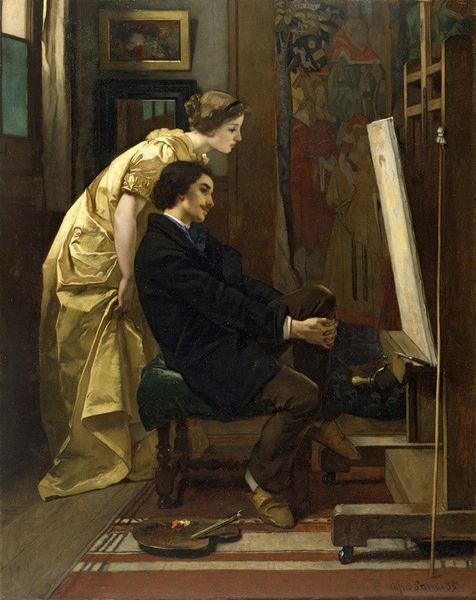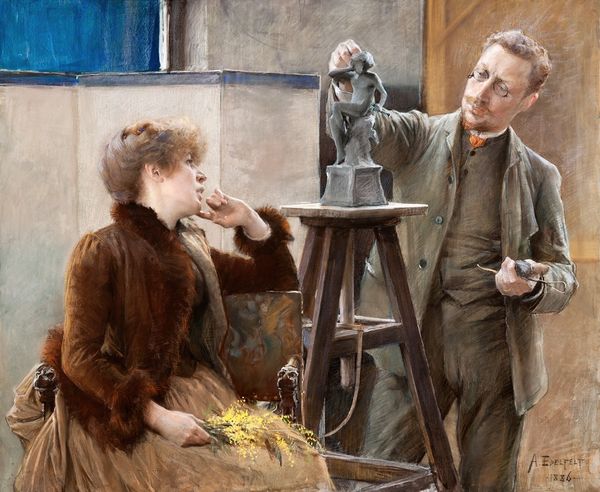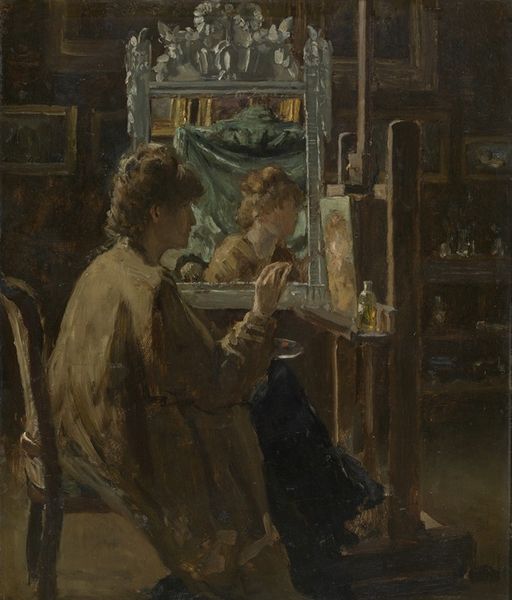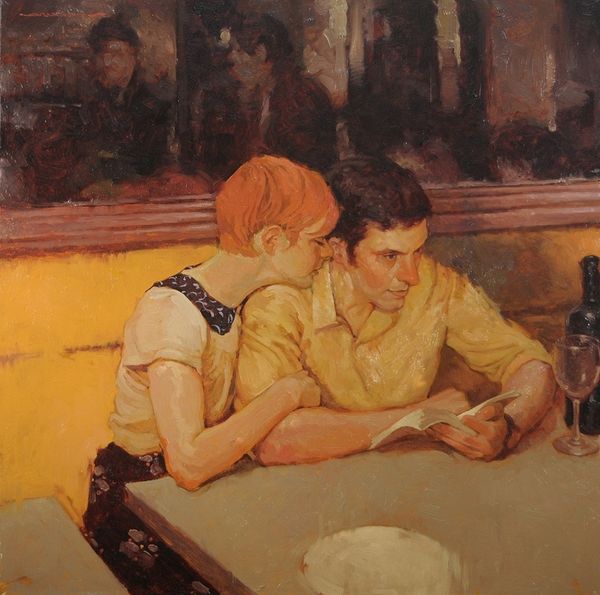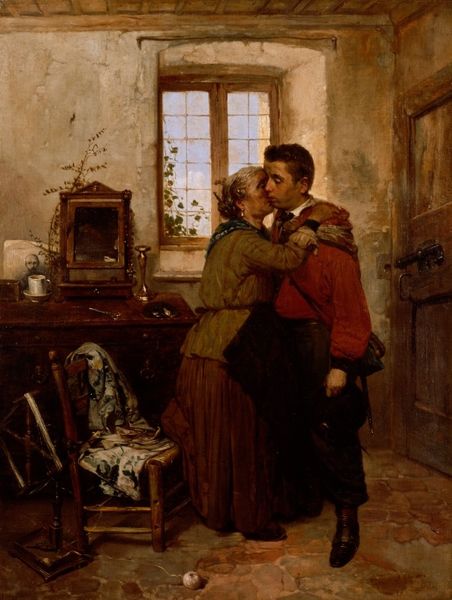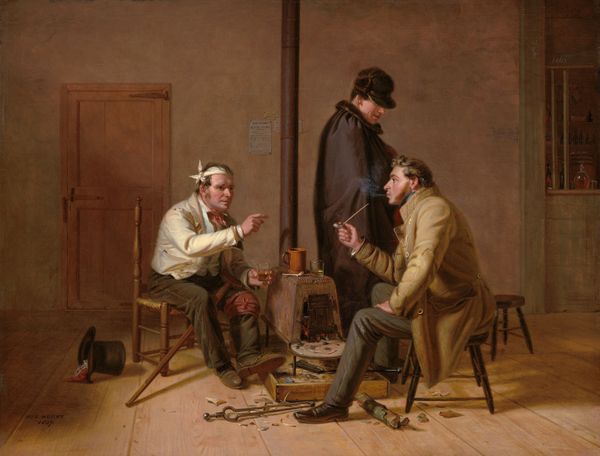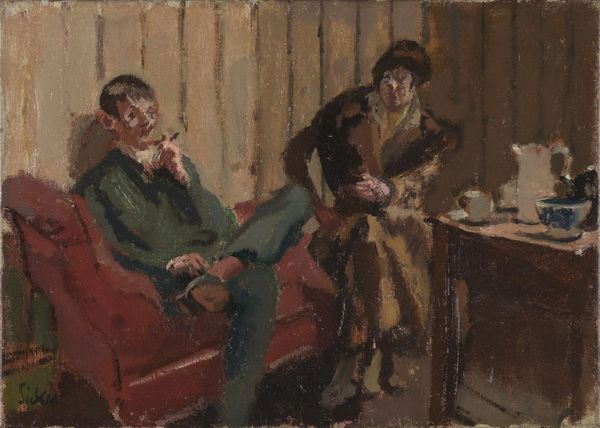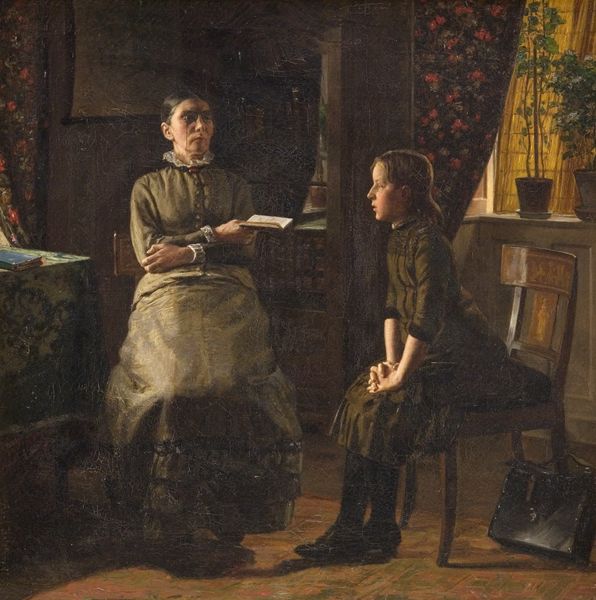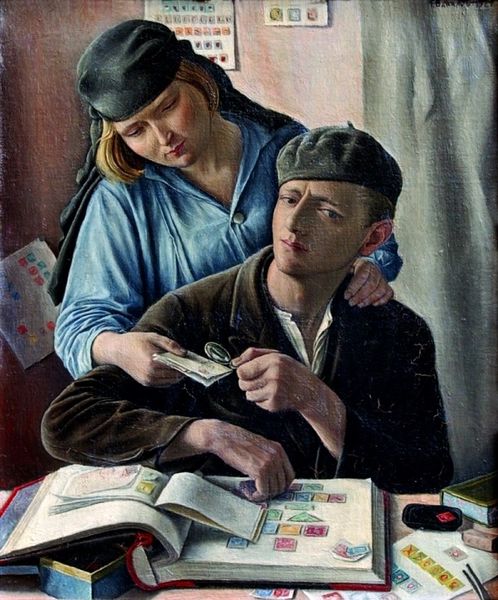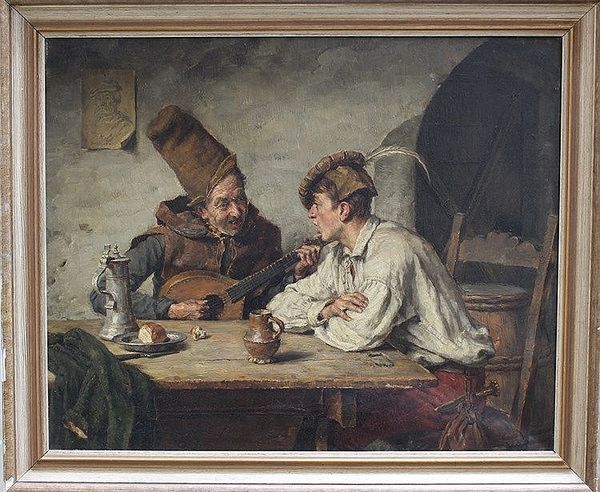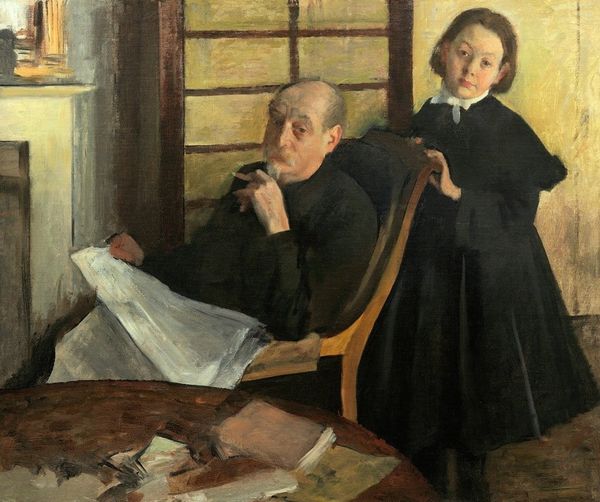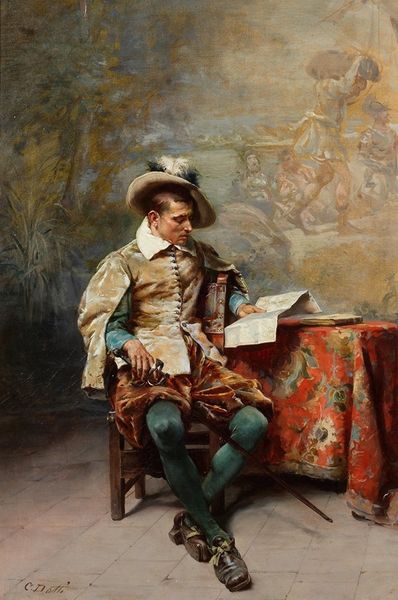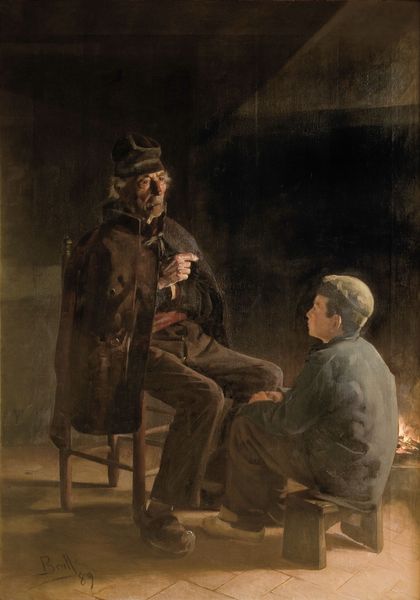
Copyright: Modern Artists: Artvee
Editor: So, here we have Norman Rockwell’s "Tides of Memory" from 1936, an oil painting. It's…melancholy, I think. The somber colors and serious expressions create a feeling of contemplation. How do you interpret this work from a formalist point of view? Curator: I concur with your observation. We note the confined setting, where pictorial space is compressed, forcing attention onto the figures. Their proximity implies a relationship, yet their averted gazes suggest disconnection or perhaps, reflection upon separate, internal tides. Rockwell's brushstrokes are loose, especially in the background, which directs the eye toward the highly rendered faces and hands. The composition hinges on a duality between stasis and narrative implication. The work teeters between a portrait and a genre painting. Do you agree? Editor: I see that. The umbrella and rain gear clearly set the scene, giving context. But, the subjects look stiff, more staged. The heavy reliance on earth tones gives it an intimate feeling. What do you think Rockwell was trying to say with the tension between the sharp realism of the figures and their posed position? Curator: This tension becomes central to a formal analysis. The rigidity can be seen as a compositional choice to emphasize the psychological weight of the moment. The earth tones contribute not just to intimacy, as you say, but also to the emotional gravity, anchoring the work in a sense of grounded realism. In terms of visual language, this grounded palette amplifies our sense of their intertwined presence, underscoring the weight of the moment through the chromatic choices themselves. Editor: I hadn't considered how the color adds to the somber mood like that. It makes the tension so much more present. Thanks for highlighting those formal qualities. Curator: Precisely! Appreciating this allows one to observe the delicate balance of color, composition, and technique and their direct effects on mood, narrative, and message.
Comments
No comments
Be the first to comment and join the conversation on the ultimate creative platform.
